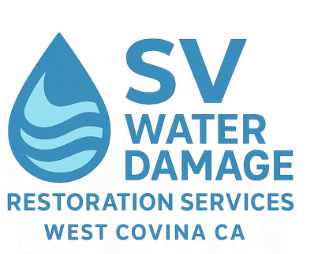When water enters a building where it does not belong, it can cause serious problems. Water can soak into walls, floors, and other parts of a building. This hidden moisture can lead to bigger issues if not handled quickly and correctly. This is where structural drying becomes very important. It is a specialized process designed to remove water from building materials.

What is Structural Drying?
Structural drying is the process of removing moisture from the parts of a building that hold it, such as wood, drywall, and concrete. This is different from just wiping up visible water. It involves using special equipment to dry out areas that may look dry on the surface but still hold a lot of water inside. When dealing with water damage, proper Structural Drying West Covina CA is crucial to protect a property.
Why is it Needed?
- Prevents Mold Growth: Mold thrives in damp conditions. If moisture is left in building materials, mold can start to grow within 24 to 48 hours.
- Protects Building Materials: Water can warp wood, damage drywall, and weaken structures over time. Drying them properly helps keep them strong.
- Removes Bad Odors: Dampness can cause musty smells. Thorough drying helps eliminate these odors.
The Importance of Professional Drying
Trying to dry a water-damaged area yourself often does not remove all the hidden moisture. Professional structural drying uses industrial-grade equipment and methods that are much more effective.
- Advanced Equipment: High-powered air movers are used to create airflow, speeding up evaporation. Large dehumidifiers pull moisture out of the air and materials.
- Moisture Detection Tools: Special meters are used to find hidden moisture in walls, floors, and ceilings. This ensures all wet areas are found and dried.
- Controlled Environment: Professionals can control the temperature and humidity in the affected area to create the best conditions for drying.
Steps in the Structural Drying Process
The process of structural drying is carefully planned and carried out to ensure all moisture is removed.
Initial Assessment
First, a detailed check is done to find where the water has gone and how much damage has occurred. This helps create a plan for drying.
Water Extraction
Any standing water is removed using powerful pumps and vacuums. This is the first step to reduce the overall moisture.
Equipment Setup
Air movers are placed to direct airflow across wet surfaces. Dehumidifiers are set up to pull moisture from the air and materials. The right amount and type of equipment are chosen based on the size of the area and the amount of moisture.
Monitoring and Adjustments
The drying process is watched closely. Moisture levels in materials and the air are checked regularly. Equipment may be moved or adjusted to make sure drying happens evenly and completely.
Final Verification
Once the materials appear dry, moisture readings are taken again to confirm that they have returned to safe, dry levels. This ensures that the risk of mold and further damage is greatly reduced.
When is Structural Drying Needed?
Structural drying is required in many situations where water has affected a building.
- Flooding: This can be from heavy rains, overflowing rivers, or burst pipes.
- Leaking Appliances: Dishwashers, washing machines, and refrigerators can leak and cause water to spread.
- Roof Leaks: Water coming through a damaged roof can soak into ceilings and walls.
- After Fire Extinguishing: Water used to put out a fire can cause significant water damage.
- High Humidity: In some cases, very high humidity over a long period can lead to moisture buildup in materials.




